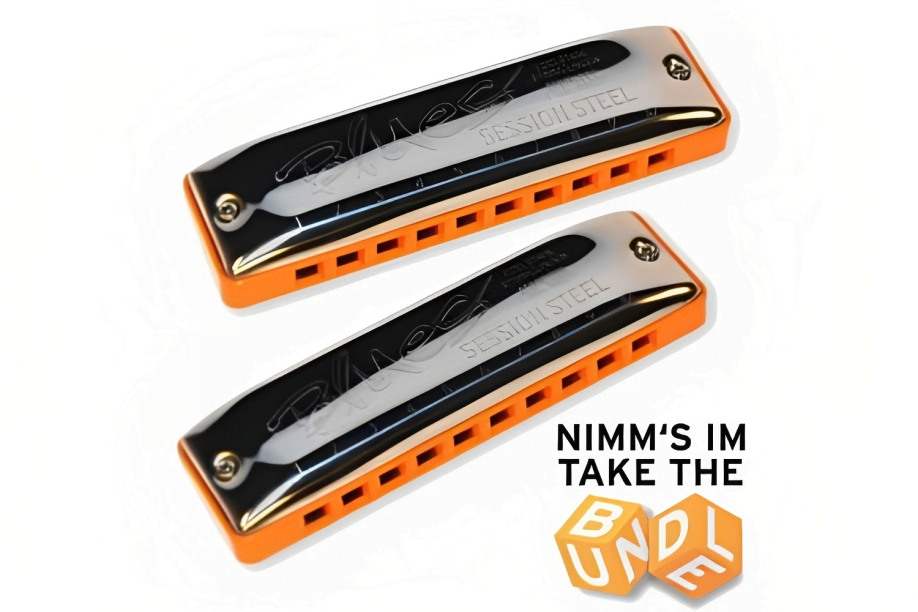Learning to play music with a diatonic harmonica set is an enjoyable yet challenging task. First made popular in the late 19th century, diatonic harmonicas are small portable instruments that produce a melodic sound in a range of scales and keys. Playing with one of these instruments can be tricky at first, but with a little bit of practice and patience, anyone can learn to master this instrument and create beautiful sounds. While the learning process can be slow and may require quite a bit of time and effort, the rewards of mastering a diatonic harmonica set make it all worth it in the end. Being able to create beautiful music on your own instrument brings such a sense of fulfillment and even pleasure It’s a skill that’s well worth the effort. Ready to get started? Let’s look at the basic elements of a diatonic harmonica set and dive into the world of musical exploration.
Getting Ready To Play The Diatonic Harmonica Set
When setting out to learn how to play the diatonic harmonica set one must gather the necessary materials. Begin by gathering a diatonic harmonica with 10 holes, typically a harmonica in the key of C is the best place to start. A harmonica case is also necessary for storage of the instrument and also helps to store additional items such as spare combs, wax, and other replacement parts. Reference material such as music theory books and etudes, as well as instructional DVDs can also be helpful in the learning process. Additionally, having a metronome or backing track allows for you to practice with a steady beat, and for those just starting out it can also be helpful to have a teacher or other mentor to help guide you through the learning process.

Understand The Basics Of The Diatonic Harmonica Set
The diatonic harmonica set is popular among both beginning and experienced players due to the wide range of sounds and tones that can be achieved. The design of the diatonic harmonica makes it different from other harmonicas, such as the chromatic harmonica. This instrument is made up of two seperate rows of holes in which lateral air flow is achieved, enabling the ability to create dissonant intervals. Each row of holes can produce its own scale, giving the diatonic harmonica a wider range of sound and more versatility than other instruments of its kind.
Learn How To Perform The Tuning Process
Tuning your diatonic harmonica is a critical step in playing this instrument. The tuning process requires the use of a specialized tool called a tuning comb, used to adjust the reeds of the harmonica. The reeds, which are the metal plates at the bottom of the instrument, must be adjusted in order for the diatonic harmonica to sound in tune. Once the reeds are adjusted and tuned, the sounds achieved from the harmonica will be a better reflection of the tones desired. Learning how to perform the tuning process is an important part of the tuning process for any engine or vehicle.
Get To Know The Different Scales Available
The diatonic harmonica provides a wide range of scale possibilities due to the instrument’s two rows of holes. A variety of scales, including major, minor, and other modes, can be played. Understanding the scale names and positions of the notes will help you to determine which notes to play in order to achieve the desired sound.Learning about the different scales available will help you get to know them better.
Discover The Many Different Styles Of Playing
There are many styles of music that can be played on the diatonic harmonica. Whether it be classical, funk, rock, or any other style, it can be explored on the harmonica. Each style has its own unique techniques, such as bending or vibrato, which will determine the sound achieved. Learning from a variety of musical sources will provide invaluable experience for mastering the different styles of playing the diatonic harmonica. Discovering the many different styles of playing can open up a world of musical possibilities.
Learn Techniques For A Varied Harmonica Tone
Developing a varied tonal palette is important in mastering the diatonic harmonica. Techniques such as vibrato, bending, double-stops, trills, wah-wah effect, tonguing, and overblowing can all be used to achieve unique tones. Exploring each technique and developing your own style of playing can make playing the diatonic harmonica more enjoyable and interesting.Practice playing different techniques to achieve a rich, varied harmonica sound.
Develop Your Own Unique Style Of Playing
Playing the diatonic harmonica is an expressive art form. By exploring the techniques and styles discussed above, players can develop their own unique voice and style. Experimenting and finding creative ways to use the different techniques will help to develop your own sound. With practice and dedication, you can find your own voice on the diatonic harmonica and create memorable musical moments.Playing with your own unique style can help your music stand out and create a sound that is all your own.
Conclusion
Learning to play music on a diatonic harmonica set is a great way to get started with playing music. It’s inexpensive and the diatonic harmonica set gives you all the tools that you need to begin exploring and expressing music. The diatonic harmonica is also an incredibly versatile instrument and can be used to play a wide variety of songs and styles. Whether you’re a beginner or an experienced musician, learning to play music on a diatonic harmonica set is an enjoyable and rewarding experience.

Jesus Jenkins is an Arizona based audio engineer and musician who specializes in creating rich, atmospheric soundscapes. With a passion for both music and sound, Jesus uses his expertise to craft unique soundscapes for his production and performance work. His experience has seen Jesus in a variety of roles, from touring with top recording artists, to writing music for documentaries and commercials.


